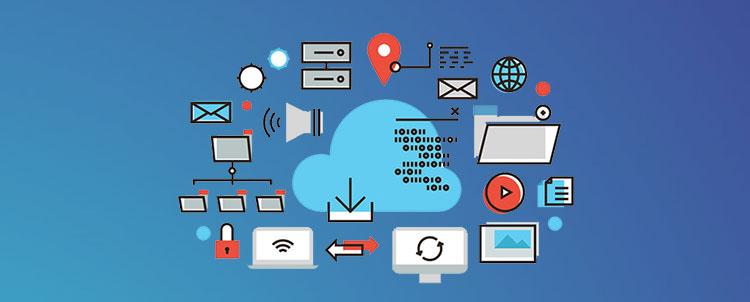Business organizations continuously adopt new technologies to streamline operations and enhance efficiency. One such technology is IoT, which drives the proliferation of interconnected devices with large data processing.
As the IoT networks expand, companies need effective data processing and management options to keep everything aligned. This is where edge computing steps in.
Edge computing is a decentralized paradigm revolutionizing the IoT landscape. This computing method processes data closer to its source of generation and provides numerous advantages for improving your IoT strategy.
The number of edge-enabled IoT devices for commercial use is expected to increase from 2,303 million in 2020 to 6,469 million in 2030 and from 401 million to 1,233 million for enterprise use.
In this blog, let’s discuss 12 essential benefits of edge-type computing for your IoT strategy.
#1: Reduced Latency for Real-Time Processing
Reduced latency is the most essential benefit of edge computing for your IoT strategy, as it favors real-time processing. IoT systems need instant data analysis and response. That’s why edge-based computing reduces latency, which is the time of delay that occurs when data is transmitted.
Edge-type computing addresses this issue by bringing data processing closer to the source of data. It minimizes the data processing and traveling time and provides faster response times for your operations. This ability is highly beneficial if you have a manufacturing firm.
#2: Enhanced Security and Privacy
Security is the biggest concern for all business enterprises. That’s why edge-type computing mitigates all security risks by processing data closer to its sources. This means sensitive data can remain on your system rather than being sent to the cloud. With localized data processing, edge devices implement many security options directly at the edge, such as encryption, firewalls, and access controls.
All of these capabilities limit your sensitive data’s exposure to security concerns. This improves security and helps companies adhere to privacy regulations like GDPR and HIPAA.
#3: Optimized Bandwidth Usage
Optimized bandwidth usage is a crucial benefit of edge-type computing, particularly for IoT systems that generate massive amounts of data. In a traditional cloud-based setup, all data from IoT devices is sent to a central cloud server for processing and storage, which can overload the network and consume significant bandwidth. This issue is especially problematic when bandwidth is limited or expensive.
Edge-based computing addresses this issue by allowing data to be processed locally at the network’s edge, meaning only the most critical or relevant information is sent to the cloud. By filtering and analyzing data closer to the source, unnecessary data transmission is reduced, and network traffic is minimized.
#4: Increased Reliability and Resilience
Increased reliability and resilience are significant advantages of edge-type computing, especially for IoT systems that operate in environments where constant connectivity to the cloud may not be guaranteed. This computing system improves reliability by enabling data processing and decision-making locally, at the network’s edge, rather than relying on distant cloud servers.
So, even if the connection to the cloud is lost or degraded, edge devices can continue functioning independently, ensuring uninterrupted service. This resilience is particularly valuable in critical applications, such as industrial automation, healthcare, or remote monitoring, where downtime can result in safety risks or operational inefficiencies.
#5: Faster Data Analysis for Improved Decision-Making
Faster data analysis for improved decision-making is a key benefit of edge-type computing, particularly in IoT systems that rely on timely insights. In traditional cloud-based models, data must be transmitted to a centralized server for processing, which can introduce delays due to network traffic and physical distance.
This lag can hinder time-sensitive applications such as smart cities, autonomous vehicles, or healthcare systems, where immediate responses are crucial. With this computing system, data is processed locally, at the network’s edge, allowing for real-time analysis. Organizations can make quicker, more informed decisions by reducing the time it takes to analyze data.
#6: Improved User Experience
Improved user experience is another significant advantage of edge-based computing, especially in IoT applications requiring hyperresponsiveness. Edge devices enable faster interactions and more seamless performance to create a smoother and more immediate user experience.
So, when giving a voice command to a smart assistant or making a real-time adjustment to a smart thermostat, edge computing ensures that devices respond almost instantaneously, enhancing overall satisfaction.
#7: Reduced Cloud Dependency
Reduced cloud dependency is a notable benefit of this computing mechanism, especially for organizations relying heavily on IoT systems. Edge-based computing minimizes this reliance by enabling local data processing and analysis.
As a result, fewer resources are required from the cloud, reducing the strain on cloud infrastructure and lowering costs associated with data storage and transmission. This decentralized approach not only provides greater autonomy for IoT systems but also enhances system performance, even in areas with limited or unreliable cloud access.
#8: Support for AI and Machine Learning Applications
Edge-based computing provides crucial support for AI and machine learning (ML) applications, particularly in IoT environments where real-time data processing and insights are essential. AI and ML models require significant computational power and timely access to large amounts of data to generate accurate predictions or automate decision-making processes.
With edge-based computing, AI and ML models can be deployed directly at the edge, closer to where the data is generated. This allows for faster data analysis and more immediate execution of AI-driven actions, reducing latency and enabling real-time decision-making.
#9: Enhanced Compliance with Data Regulations
Edge computing enhances compliance with data regulations by allowing organizations to process and store sensitive data locally rather than transmitting it to centralized cloud servers. Many industries, such as healthcare, finance, and government, must adhere to stringent data privacy regulations like GDPR, HIPAA, and others, which often require data to be stored within specific geographic regions or handled under strict privacy controls.
Conclusion
Edge-type computing is an essential component of a successful IoT strategy that offers a large number of benefits to improve your company’s performance, security, scalability, and cost-efficiency. The twelve benefits mentioned in this blog can help you reform a good strategy with IoT integrated with edge-type computing.
This computing option provides the real-time insights, reliability, and flexibility needed to stay competitive in today’s digital landscape by bringing data processing closer to the source. Entailing edge-type computing into your IoT strategy enables you to respond quickly to changing market conditions.
Read More: What Are the Top Trends in Database Solutions You Should Know?




